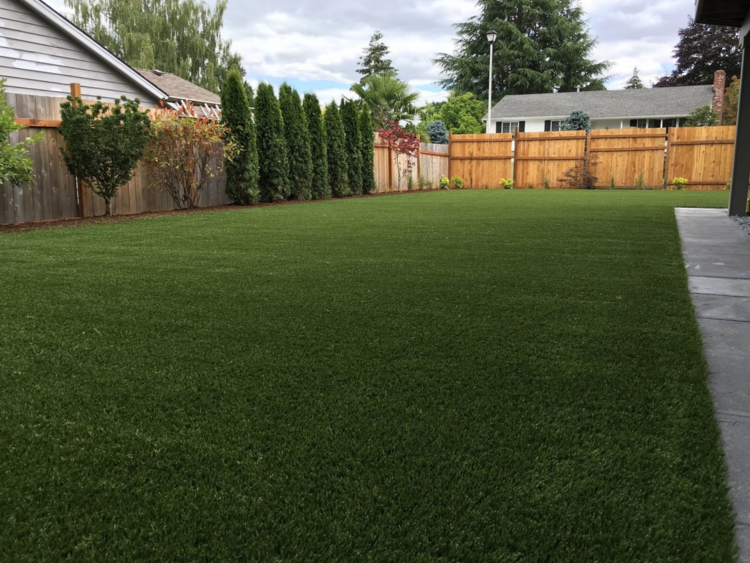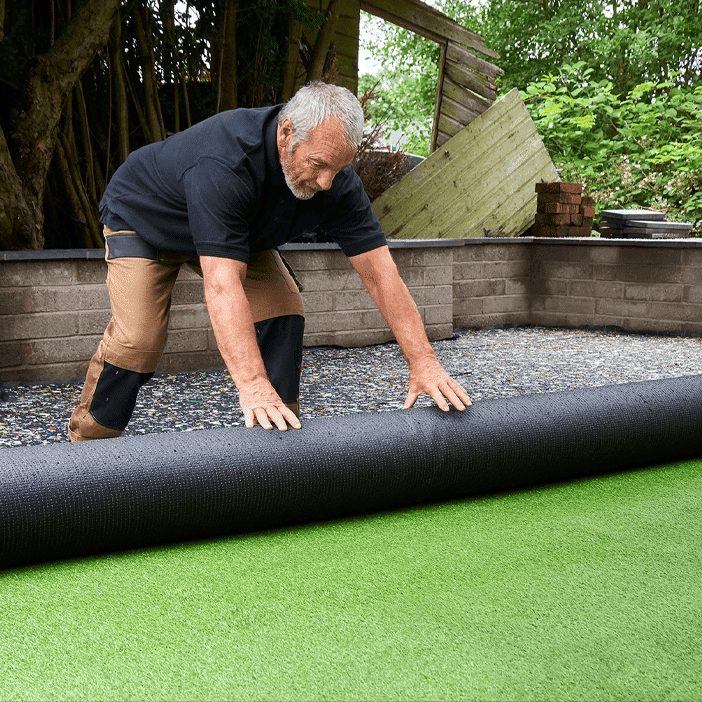Environmentally Safe Arizona Artificial Turf for a All-Season Lush Green Lawn
Environmentally Safe Arizona Artificial Turf for a All-Season Lush Green Lawn
Blog Article
Delve Into the Environmental Conveniences of Opting for Synthetic Grass Solutions
The adoption of synthetic lawn services presents an engaging possibility to resolve pressing environmental challenges. By considerably minimizing water use and decreasing the application of harmful chemicals, these alternatives not just promote lasting landscape design but likewise safeguard neighborhood ecosystems. The lower carbon impact connected with lowered upkeep activities adds to a much more sustainable strategy to land management. Nevertheless, the effects of these advantages expand past simple conservation initiatives, questioning concerning their long-term influence on environment preservation and overall eco-friendly equilibrium. Discovering these measurements exposes an intricate interaction worth considering.
Water Conservation Conveniences
One of the most considerable benefits of synthetic lawn is its capability to save water. In contrast, artificial lawn does not require watering, substantially reducing the general demand for water sources.
By removing the need for normal watering, synthetic turf adds to lasting landscape practices and aids minimize the ecological influence of excessive water consumption. The preservation of water extends to the reduction of runoff, which can lead to dirt disintegration and waterway pollution.
Furthermore, the setup of synthetic grass allows home owners and municipalities to allot water sources extra effectively, focusing on crucial usages such as alcohol consumption water and farming. The change towards synthetic grass not just advertises liable water usage yet also aligns with broader environmental objectives focused on maintaining natural sources.
As communities progressively prioritize sustainability, the water preservation advantages of synthetic turf present an engaging situation for its adoption in domestic and industrial landscaping tasks.
Lowered Chemical Use
The transition to artificial turf considerably decreases the reliance on chemical treatments commonly used in natural turf maintenance. Typical grass management usually includes the application of chemicals, fertilizers, and herbicides to promote development and control pests. These chemicals can pose threats to human health and wellness, neighborhood wildlife, and the atmosphere, adding to dirt and water contamination.
In contrast, man-made turf removes the demand for these damaging materials. By reducing the launch of artificial substances right into the community, fabricated lawn promotes much healthier soil and water systems.
Furthermore, the absence of chemical drainage connected with synthetic grass setups aids shield local waterways from pollution, supporting marine life and keeping biodiversity. Arizona artificial turf. As communities progressively focus on lasting practices, choosing synthetic grass offers a practical remedy that lines up with ecological conservation objectives. Via this change, homeowner can delight in lavish eco-friendly areas without compromising ecological health and wellness, leading the way for an extra lasting future
Reduced Carbon Footprint

Furthermore, the installation of synthetic grass can result in considerable water conservation. Natural grass require significant quantities of water for watering, which not just contributes to the carbon footprint connected with water extraction and therapy yet also pressures regional water sources. In comparison, man-made grass requires marginal upkeep, calling for no watering, consequently substantially minimizing water usage and its linked energy expenses.
Additionally, the durability of artificial turf adds to its lower carbon influence. With a life-span of up to 15 years or even more, the demand for frequent replacements is lessened, leading to less waste and lower energy intake in production and throwing away typical grass options. Overall, synthetic lawn offers a sustainable alternative for eco aware landscape design.
Habitat Conservation
Environment conservation is a vital consideration in the dispute over landscaping choices, especially when comparing man-made lawn to natural lawn. All-natural lawn lawns commonly require comprehensive upkeep, consisting of the usage of chemicals, plant foods, and herbicides, which can adversely affect local environments. These chemicals can seep right into the dirt and rivers, harming indigenous flora and fauna and disrupting neighborhood habitats.
In comparison, synthetic grass provides a chance to minimize the ecological footprint of landscaping. By choosing artificial turf, home owners can lessen the disturbance of all-natural environments related to typical grass go to this site treatment methods. Man-made turf gets rid of the demand for damaging chemicals, thus protecting nearby wild animals and keeping the honesty of bordering ecosystems. The setup of artificial turf can lead to the conversion of former lawn locations right into even more biodiverse landscapes, such as pollinator yards or native plant areas, which can sustain local wild animals.
Ultimately, the change to synthetic grass not just conserves water and minimizes maintenance initiatives yet additionally cultivates a much more harmonious relationship between human tasks and the natural setting, advertising habitat preservation at the same time.
Long-Term Sustainability
Long-lasting sustainability is an important consider assessing the advantages of synthetic lawn over conventional lawn yards. One of one of the most considerable advantages of synthetic grass is its toughness; it can last as much as 15-20 years with minimal upkeep, whereas natural yard calls for frequent reseeding and replacement. This long life reduces the demand for constant resources, such as water, fertilizers, and chemicals, which are necessary for preserving a healthy and balanced yard yard.
Furthermore, fabricated lawn adds to a reduction in carbon emissions connected with grass care equipment. Typical lawns commonly call for gas-powered mowers, leaners, and blowers, every one of which contribute to air pollution. Turf installation phoenix az. On the other hand, fabricated lawn gets rid of the requirement for such tools, promoting a cleaner atmosphere
Additionally, the manufacturing of synthetic grass increasingly utilizes recycled products, enhancing its sustainability account. As makers adopt environment-friendly methods, the environmental footprint of synthetic turf proceeds to decrease.

Verdict
The adoption of fabricated lawn options offers considerable ecological advantages, including visit this site right here substantial water conservation, decreased reliance on harmful chemicals, and a reduced carbon impact. Artificial lawn aids in preserving all-natural habitats by minimizing land disruption and promoting lasting sustainability with the use of long lasting materials. Collectively, these factors highlight the possibility of synthetic grass to add favorably to environmental wellness and provide a sensible choice to traditional landscape design methods in a progressively resource-conscious world.
In comparison, fabricated grass does not require watering, considerably decreasing the overall demand for water sources. By lessening the release of synthetic substances into the ecological community, artificial grass advertises much healthier dirt and water systems.
Moreover, the great post to read setup of man-made lawn can result in significant water conservation. In contrast, man-made turf requires marginal upkeep, calling for no watering, therefore dramatically decreasing water use and its connected energy expenses.

Report this page